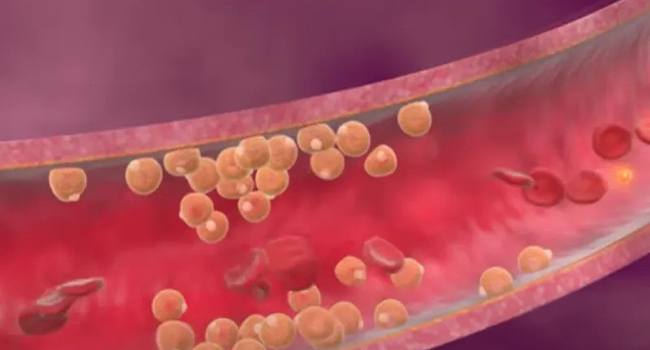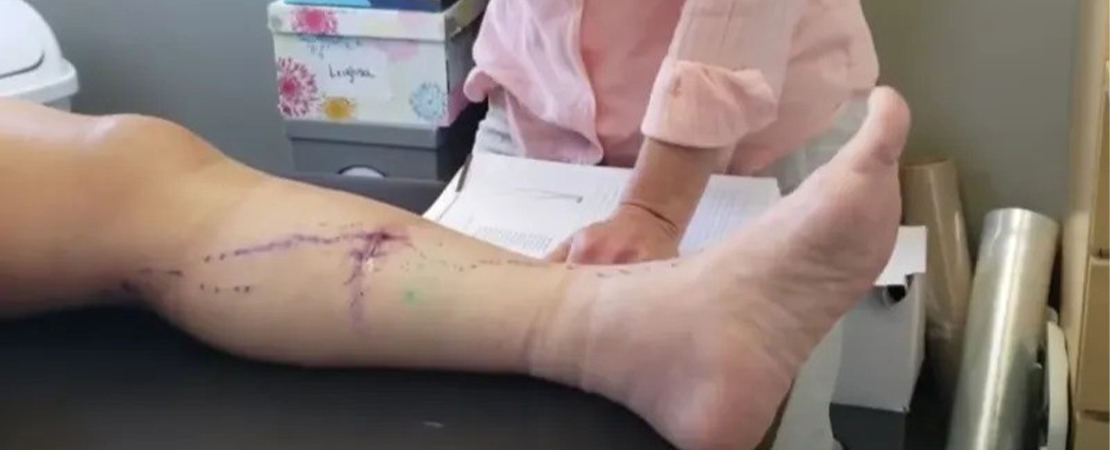Cycling while taking blood thinners can lead to complications such as leg swelling. Blood thinners may cause blood to pool in the lower extremities, particularly during prolonged periods of activity like cycling. Patients taking these medications must monitor for signs of swelling or discomfort and consult their healthcare provider to manage potential side effects effectively.
Blood flow and pressure on the veins increase during cycling, especially when pedaling hard or uphill, which can cause veins to expand. This, combined with the effects of blood thinners, may cause blood pooling in the legs or feet, potentially causing swelling.
We’ll explore how these effects occur, why some cyclists might experience leg swelling while on blood thinners, and, importantly, the strategies to manage it effectively.
Can Blood Thinners Cause Leg Swelling During Cycling: 5 Impact

Blood thinners, also known as anticoagulants, help prevent blood clots from forming or growing larger. While they are primarily used to treat or prevent conditions like deep vein thrombosis (DVT) or pulmonary embolism (PE), they can also have secondary effects on the body, including potential impacts on leg swelling. Here’s how blood thinners might affect leg swelling:
Reduced Risk of Clots
Blood thinners prevent clots from forming or getting more prominent. In conditions like DVT, where blood clots accumulate in deep veins, thinners can prevent the clot from growing larger, leading to swelling, pain, and even tissue damage.
For cyclists who cycle regularly, blood thinners are beneficial since they reduce the chance of clot formation during prolonged periods of sitting or inactivity, such as during long rides.
Improved Blood Flow
Blood thinners can promote better blood flow through the veins by preventing clot formation. This can reduce the likelihood of fluid accumulation in the legs, a common cause of swelling. Cycling promotes blood circulation, which can complement the effects of blood thinners and reduce the risk of swelling.
Potential Side Effects
While blood thinners can reduce swelling by preventing clot formation and improving blood flow, their side effects may indirectly contribute to swelling. For example, some blood thinners can cause bleeding, and sometimes, they can cause edema.
Edema, or swelling, is typically a result of fluid accumulation in the body’s tissues. Cyclists who cycle should know the signs of bleeding and promptly report any unusual swelling or discomfort to their healthcare provider.
Varied Personal Responses
People may respond differently to blood thinners and cycling. Some people may experience reduced leg swelling due to improved blood flow and clot prevention, especially when combined with regular cycling.
However, others may experience swelling as a side effect or because of complications such as bleeding. It’s essential for cyclists taking blood thinners to let their doctor know about any changes in swelling or other symptoms they experience during or after cycling sessions.
Monitoring and Management
Medical monitoring is crucial for people who cycle and take blood thinners. This includes assessing for signs of bleeding or other side effects and evaluating any changes in leg swelling or other symptoms.
Adjustments to medication dosage or modifications to the treatment plan may be necessary to optimize benefits and minimize risks, particularly for people with an active lifestyle such as cycling.
6 Real Reasons Blood Thinners Cause Leg Swelling While Cycling
A blood thinner primarily aims to prevent blood clots and reduce complications, such as deep vein thrombosis. Blood thinners, also known as anticoagulants, can cause leg pain, swollen ankles in some cases, and pulmonary embolism (PE).
Still, occasionally, they can cause leg swelling, especially in cyclists. Here are six potential reasons blood thinners may cause leg swelling during cycling:
- Fluid Retention: Blood-thinning medications like Warfarin interfere with Vitamin K-dependent clotting factors, which are essential for stopping clots, but they indirectly lead to more generalized fluid retention, aka swelling.
- Increased Risk of Bruising: Cyclists on blood thinners face an increased risk of bruising, which can lead to swelling. Bumps and cuts can have serious consequences.
- PE and Deep Vein Thrombosis (DVT): Athletes, including cyclists, can get PE or DVT, which can lead to blood pooling up in the legs or feet, with the complication of clots forming and then being pushed into the lungs.
- Venous Hypertension: This condition is associated with more dramatic swelling, leg discomfort, and a higher risk of skin sores.
- Cardiovascular Stress: The cardiovascular stress cyclists place their bodies under could be an issue. An impact injury may not be the only danger of training/riding while on blood thinners.
- Long-Term Use of Anticoagulants: Long-term use of anticoagulants because of conditions like atrial fibrillation (AFib) can also contribute to leg swelling.
Strategies for Effectively Managing Leg Swelling While Cycling on Blood Thinners

The complex interaction between blood thinners and leg swelling during cycling requires proactive management strategies. A targeted approach and lifestyle modifications can optimize cyclists’ cycling experiences while minimizing swelling episodes. Cycling under blood thinners can lead to leg swelling. Here’s how to manage it.
Hydration and Nutrition Guidelines
- Fluid Intake: Maintaining adequate hydration levels is essential for supporting optimal blood circulation and reducing the risk of fluid retention.
- Electrolyte Balance: Ensuring a balanced intake of electrolytes can aid in regulating fluid levels and preventing imbalances that may contribute to swelling.
- Nutrient-Rich Diet: Incorporating foods rich in antioxidants, anti-inflammatory properties, and vitamins can support overall vascular health and reduce inflammation.
Compression Therapy and Supportive Gear
- Compression Garments: Compression socks or sleeves during cycling sessions can promote venous return, reduce swelling, and enhance circulation.
- Proper Fit: Ensuring the correct fit of compression garments is crucial for maximizing their effectiveness in managing leg swelling while cycling.
- Supportive Footwear: Opting for supportive cycling shoes with proper arch and ankle support can help alleviate stress on the lower limbs and aid in fluid movement.
Regular Exercise and Stretching Routine
- Warm-Up and Cool-Down: Prioritizing warm-up and cool-down routines before and after cycling can help prepare the muscles, improve blood flow, and reduce the likelihood of swelling.
- Low-Impact Exercises: Incorporating low-affected exercises, such as swimming or yoga, on non-cycling days can promote circulation and maintain muscle tone without excessive leg stress.
- Stretching Regimen: Implementing targeted stretching exercises for the calf muscles, hamstrings, and quadriceps can ease tension, improve flexibility, and enhance blood flow.
Monitoring Symptoms and Progression

- Self-Assessment: Regularly monitoring leg swelling symptoms, size or discomfort level changes, and overall response to cycling activities is critical to early detection and intervention.
- Documentation: Keeping a journal or diary to track swelling patterns, exercise routines, medication intake, and dietary habits can provide valuable insights for healthcare providers.
- Consultation with Healthcare Professionals: Engaging with physicians, pharmacists, or specialized healthcare providers can offer personalized guidance, adjustments to medication regimens, and tailored recommendations for managing leg swelling effectively.
Conclusion
Blood thinners and cycling can interact complexly, resulting in leg swelling for some cyclists. But this doesn’t mean you have to hang up your cycling shoes.
By understanding the reasons behind such swelling and employing effective strategies, you can manage these symptoms and continue to enjoy the thrill of the ride. Remember, a smooth ride is more than just riding a bike. It’s about steering your health in the right direction, as well.
FAQs
Can I Ride A Bike While On Blood Thinners?
While a road bike poses too much risk for scrapes, bruising on legs, and more severe injuries that can be complicated by blood thinners, a stationary bike can be an excellent alternative.
Can I Ride Roller Coasters While On Blood Thinners?
Riding roller coasters while on blood thinners can be risky because of the sudden movements and changes in G-force, which can increase the risk of bruising, bleeding, and other complications. The rapid acceleration-deceleration forces experienced while riding a roller coaster can cause the brain to bounce inside the skull and potentially rupture veins.
Does Eliquis Cause Swelling In The Legs?
Yes, Eliquis can cause swelling in the legs as a side effect. Swelling, particularly in the lower extremities, is a known but less common adverse reaction to this medication.
What Are The Common Symptoms of Leg Swelling While Cycling On Blood Thinners?
Symptoms may include increased leg circumference, tightness or heaviness in the legs, visible swelling, and discomfort during or after cycling.


